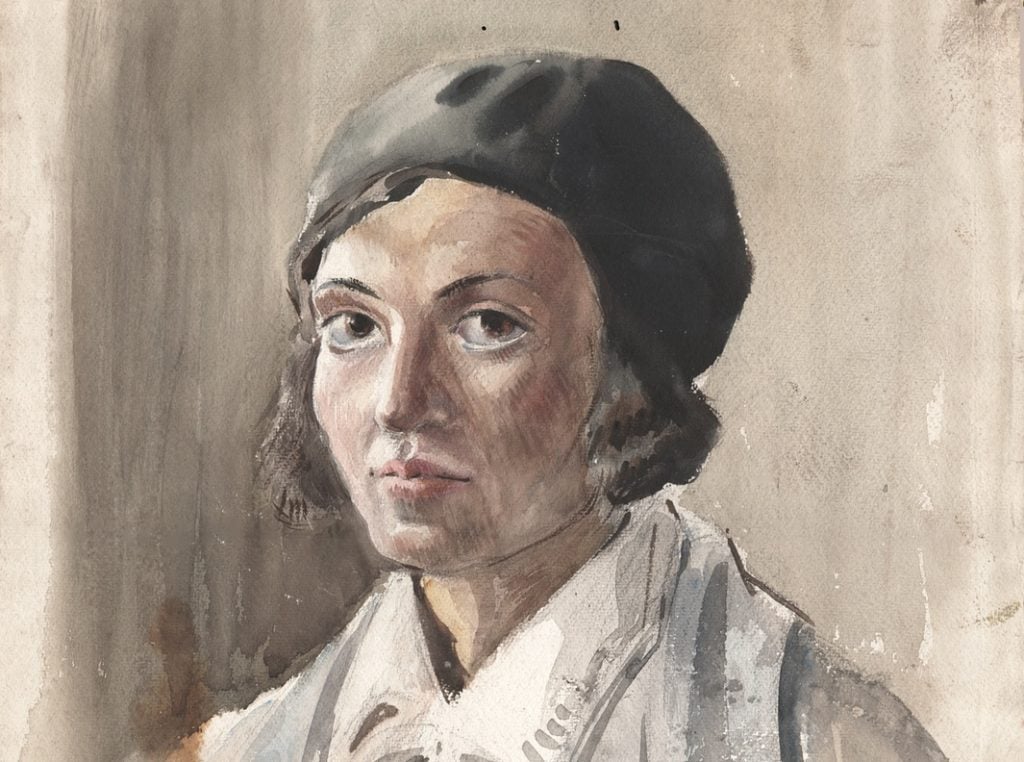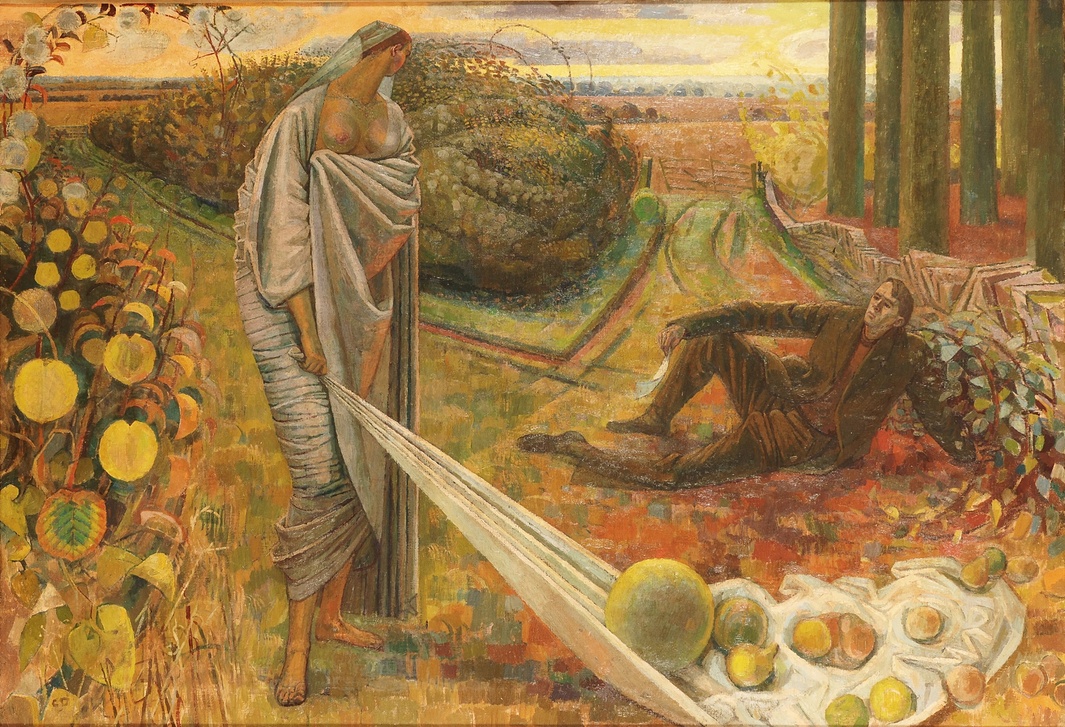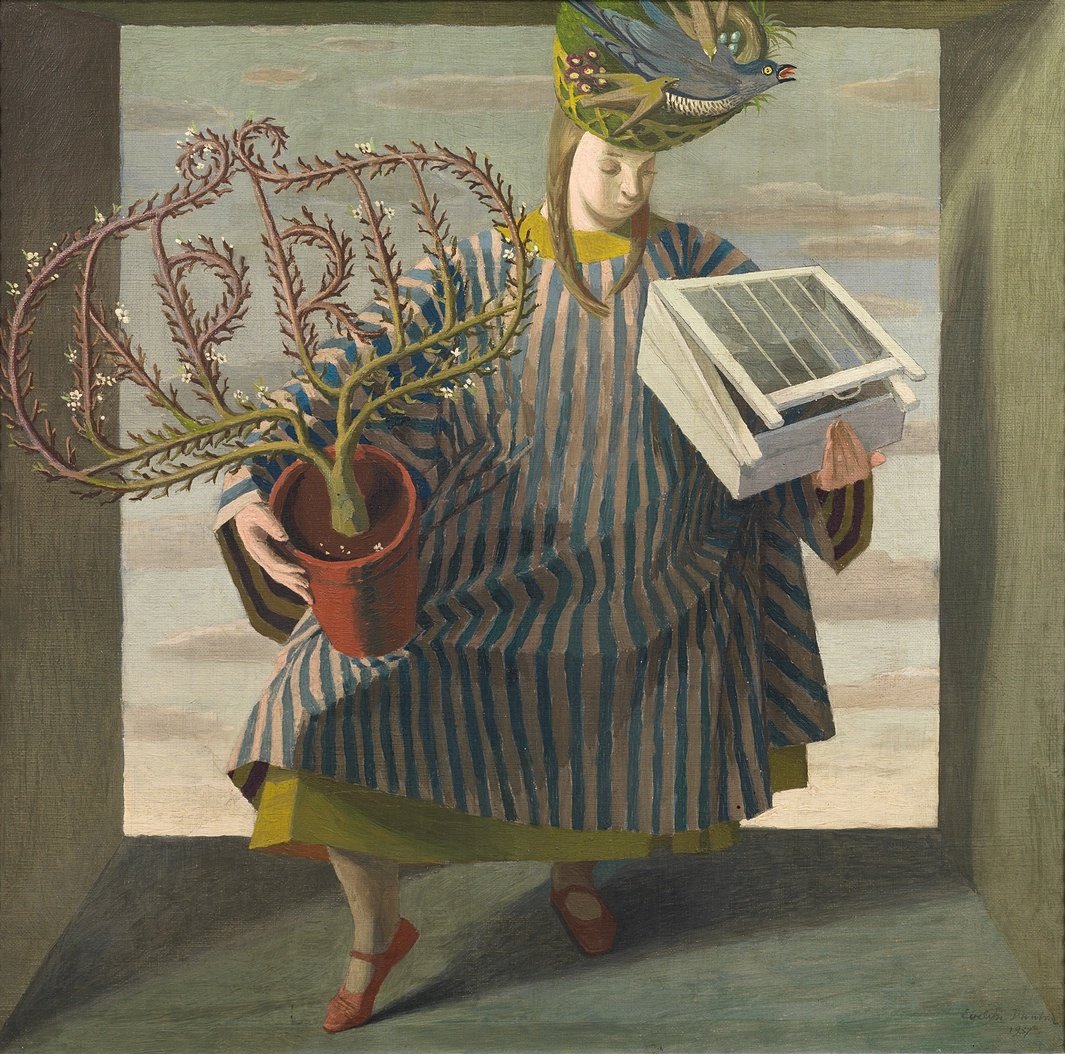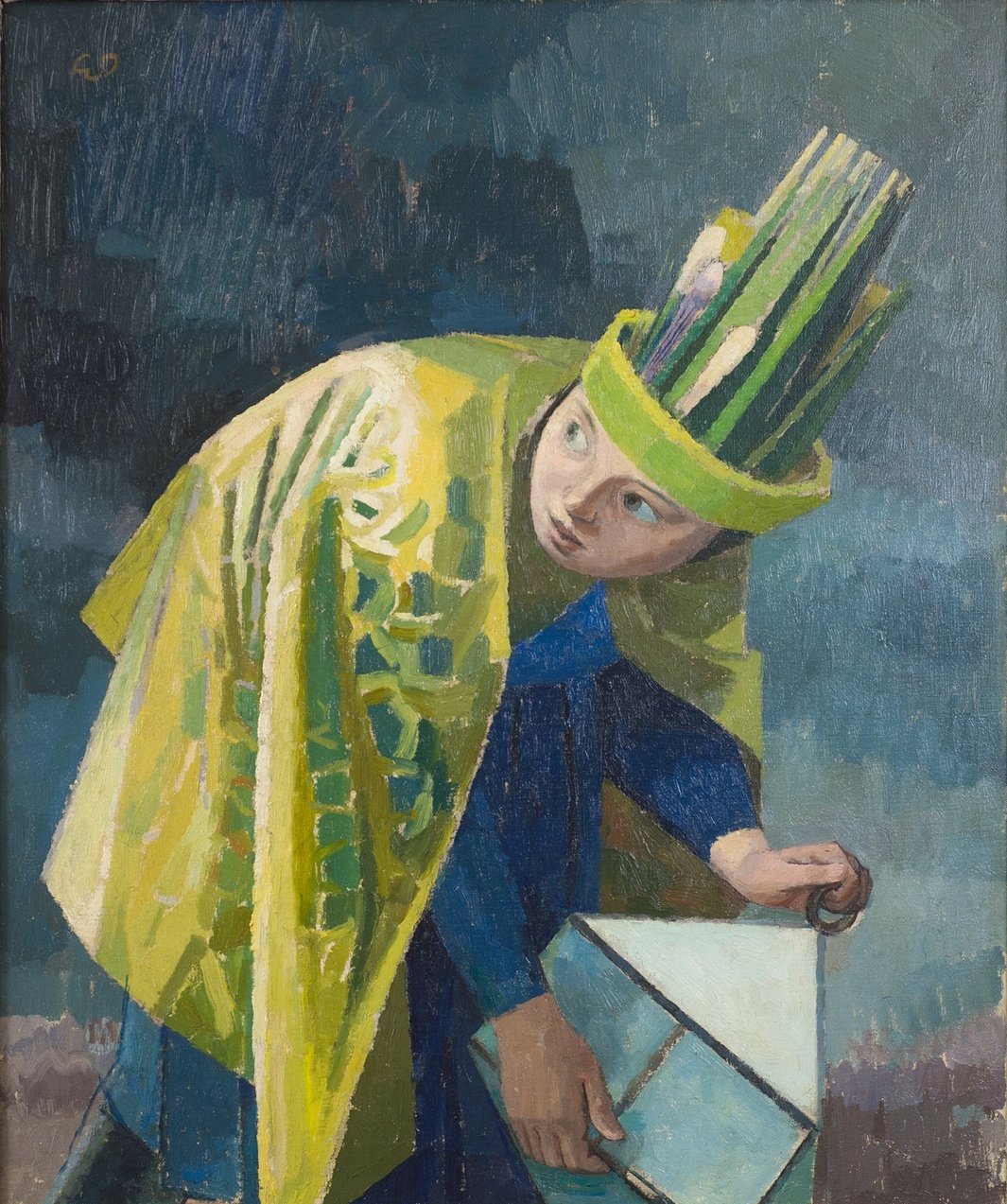Analysis
Paintings of World War II-Era Female Artist Forgotten in Attic Finally Get a Retrospective
After 50 years, forgotten Evelyn Dunbar works come to light.

After 50 years, forgotten Evelyn Dunbar works come to light.

Sarah Cascone

When Evelyn Dunbar, the UK’s only salaried female wartime artist, died in 1960, her studio was dismantled and her paintings sold or given to family and friends. Now, a new retrospective at the Pallant House Gallery in Chichester brings to light some of the 500 lost Dunbar artworks found by her family in a farmhouse attic.
Dunbar’s work is held by Tate Britain and the Imperial War Museum, but in the years since her death, many of her works have been in storage.

Evelyn Dunbar, Autumn and the Poet (1948–60). Photo: The Evelyn Dunbar estate, courtesy Liss Llewellyn Fine Art.
The rediscovered works join a recent spate of forgotten artworks returning to the public eye, including an Alfred Munnings watercolor that turned up in an old shed, a sketch of Frederic Leighton‘s Flaming June found behind a bedroom door, and a pair of John Duncan Fergusson works discovered in a French attic.
The lost cache of drawings and paintings was discovered by Ro Dunbar, the painter’s niece, thanks to an episode of the Antiques Roadshow. Two years ago, the show’s experts identified a Dunbar canvas as a masterpiece worth £40,000–60,000 (about $62,000–93,000), despite being by “what is perhaps an unknown artist.”

Evelyn Dunbar, April (1937), a Gardener’s Diary commission for Country Life.
Photo: The Evelyn Dunbar estate, courtesy Liss Llewellyn Fine Art.
While watching the show, she realized it was time to investigate the long-forgotten contents of her farmhouse attic.
“I had no idea what was up there,” Ro told the Guardian. “I thought it might all be paintings by Evelyn’s mother, Florence.”

Evelyn Dunbar, Milking Practice with Artificial Udders (1940), a commission for the Women’s Land Army.
Photo: The Evelyn Dunbar estate, courtesy Liss Llewellyn Fine Art.
Together with Dunbar’s nephew Christopher Campbell-Howes, who had been searching for his aunt’s lost work, Ro sorted through the artistic trove, remarkably none the worse for wear after roughly 50 years of neglect. “There’s a bit of a nibble here and there, but nothing was too damaged. It just needed cleaning,” said Ro.
In addition still life works by Florence, the attic’s holdings included commissioned works Dunbar created during World War II for the Women’s Land Army, and an oil painting based on pen and ink portraits inspired by the months of the year created for Country Life‘s “Gardener’s Diary.”

Evelyn Dunbar, February (1937–38), an oil painting following an original design for Country Life.
Photo: Petraphotographe*e/the Evelyn Dunbar estate, courtesy Liss Llewellyn Fine Art.
Altogether, the find doubled the number of known Dunbar works. The Pallant House retrospective, “Evelyn Dunbar: The Lost Works,” features much of Ro’s collection, as well as the Antiques Roadshow find, Autumn and the Poet, which the owner donated to the Maidstone Museum in Kent.
For now, Ro is keep mum on whether she plans to sell her Dunbar collection following the exhibition, simply stating, “More than anything, I’m glad she is getting the recognition she deserves.”